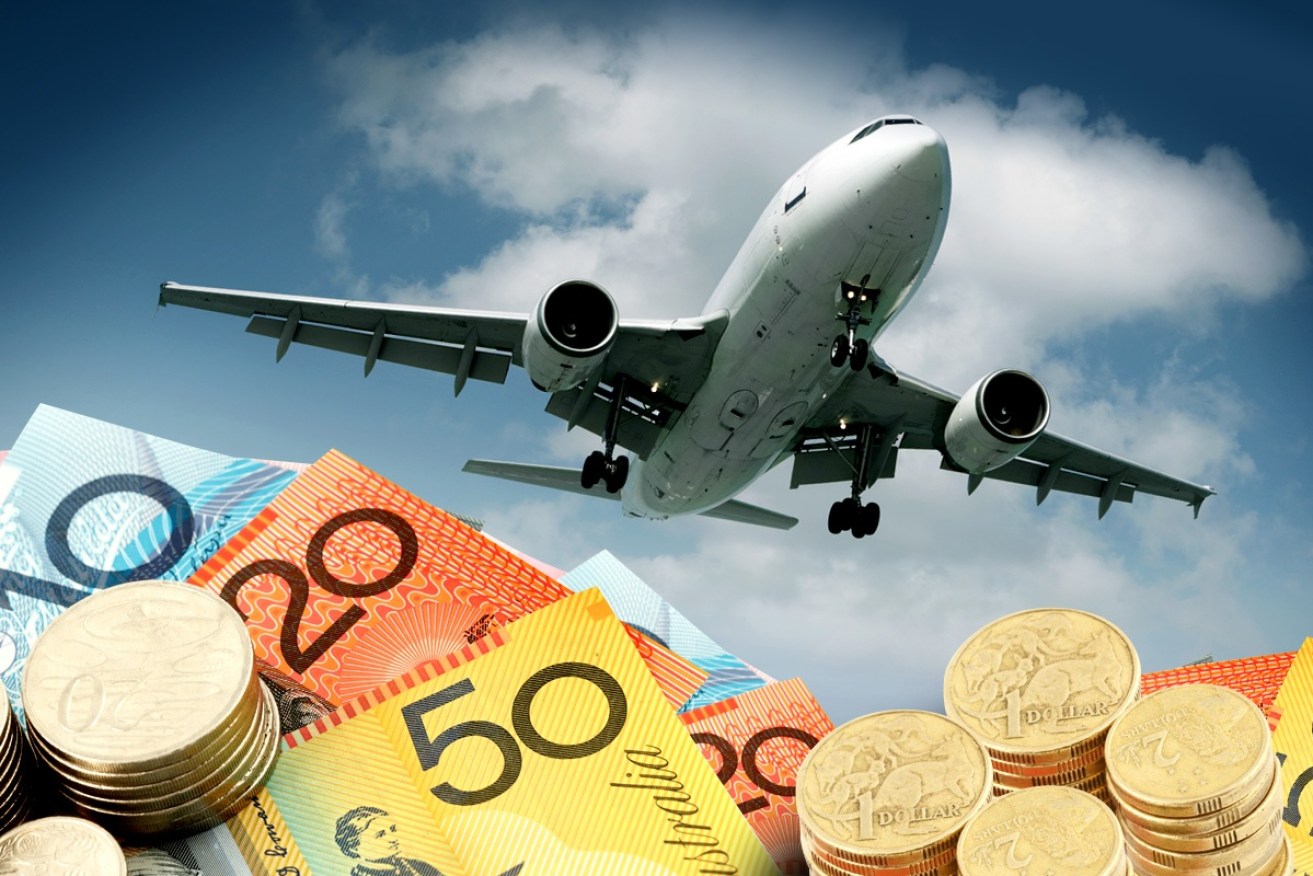Falling Aussie dollar may hurt summer holiday plans

Put another way, we are the 69th least affordable, according to the 2017 Flight Price Index.
The Australian dollar has fallen to a six-month low against the greenback and is weakening against other key currencies as well, which will hurt overseas travellers over the holidays.
The AUD traded at 72.5 US cents at 4pm on Tuesday, down more than 3 per cent since December 14, the Reserve Bank reported. The last time it hit the 72 cent mark was June 3.

The USD has appreciated against the currencies of many major economies, including our own, after the Fed rate hike. Photo: Getty
Since Thursday, when the US Federal Reserve announced its first rate hike in a year, our currency also started falling against the Chinese renminbi, the euro, the Japanese yen and the British pound.
Thanks to fees, the exchange rates faced by Australians heading overseas will be even worse.
Apart from the Fed decision, the pullback could also be explained by shaky Australian economic data, including Monday’s MYEFO, and rumblings in Asian markets. But short of an academic study, we won’t know for sure.
IG Research chief market strategist Chris Weston, a currency speculator, said the Aussie dollar could fall further against the USD to “the low 70 cents” in January-March if Donald Trump’s stimulus policies work and the Australian economy continues to “muddle along”.
“I don’t see a collapse in the Australian exchange rate from here, but I do think there are lower levels,” he told The New Daily.
Mr Weston’s advice to overseas travellers was, for peace of mind, to buy half of the currency they need for their summer vacation right away.
“If it’s trending lower but you’re unsure, lock in half now. If the trend is lower, the probability suggests you’re probably going to get even lower levels, so locking in some now allows you to sleep easier.”
A reason to only buy half of the foreign currency you need is that the AUD could rise again before your trip.
“If we go into Q1 and there’s absolutely no signs that Trump’s plans are going to go through, and China and Australia seem okay, then we might push back up to 75 or 76 cents, perhaps even higher.”
Falling AUD: how to save on exchange fees
Many tourists prefer cash, as they don’t have to worry about it being accepted. When buying currency, you want the highest rate and the lowest fee possible.

Give careful consideration to whether you’ll go with cash, card or cheque. Photo: Getty
To get a better deal, consider changing your money at a bank rather than the airport, as you are likely to lose less in the trade.
Banks and currency exchangers offer exchange rates worse than those quoted above, in order to make profit. Then they add fees and commissions on top.
You’ll probably get a far better deal at a bank. Airport vendors usually charge triple the fees of banks, consumer group CHOICE estimated in 2014.
For those using plastic, compare the market for prepaid travel money cards with debit/credit cards with low foreign transaction fees.
If you already have an Australian rewards credit card, ask your bank if it comes with special deals for travel insurance and travel money cards.
Travellers cheques are increasingly going out of fashion, but one advantage is that they usually come with insurance against theft, and can be refunded for cash if unspent. For this reason, they are often more expensive than cash.
Why we may need a falling AUD
It will sting overseas travellers, but a falling Australian dollar may boost the economy, and fill the government’s depleted coffers.

A weaker AUD could boost the economy. Photo: Getty
As we learned in the mid-year budget update (MYEFO) on Monday, the government is predicting even lower household spending and wage growth, which it expects to slow the economy further.
About half of government revenue comes from taxes on working people, as MYEFO illustrated. Over the next four years, Treasury expects to get $30.7 billion less in revenue than it predicted in the May budget. More than half ($18.3 billion) of this lost revenue was income tax.
Many experts believe a weaker dollar would give a boost to manufacturing, farming, tourism, and exports, which should flow through in rising employment, stronger wage growth and more household spending.
The Reserve Bank has been hoping for months that its rate cuts would depreciate the currency.








